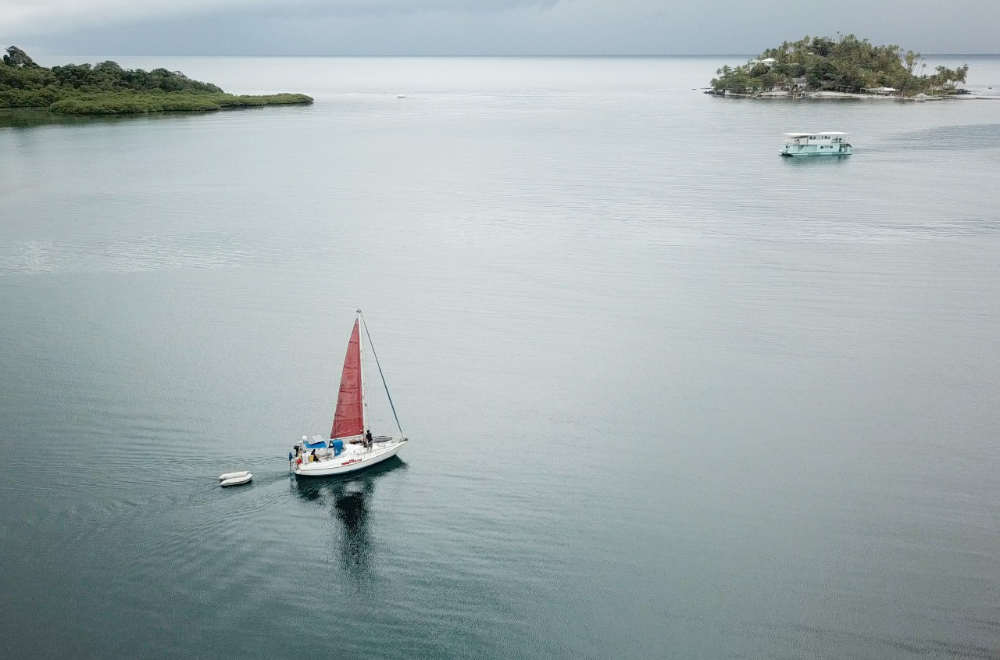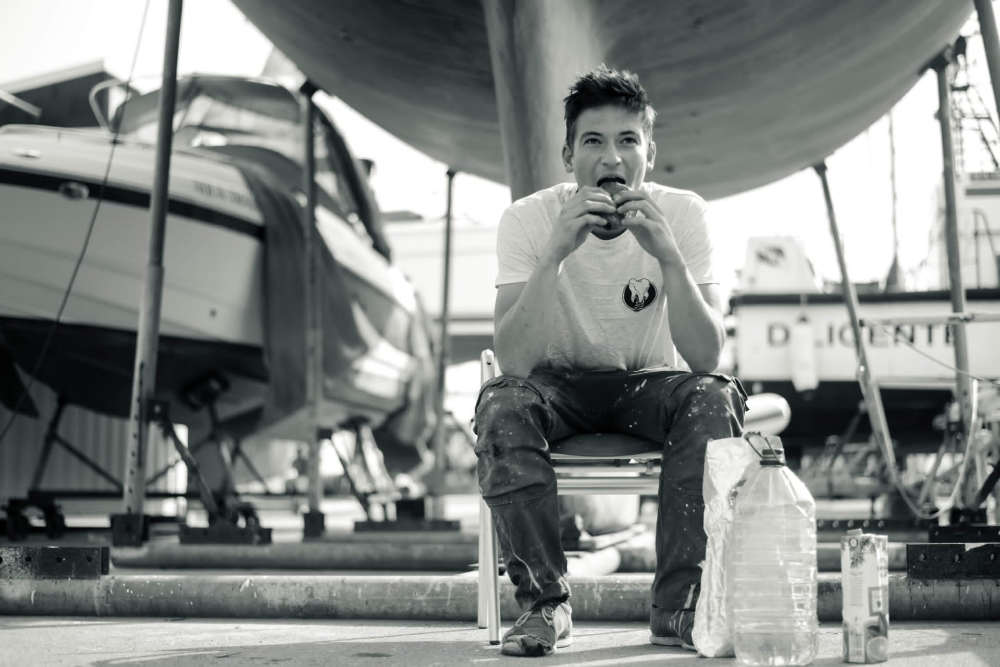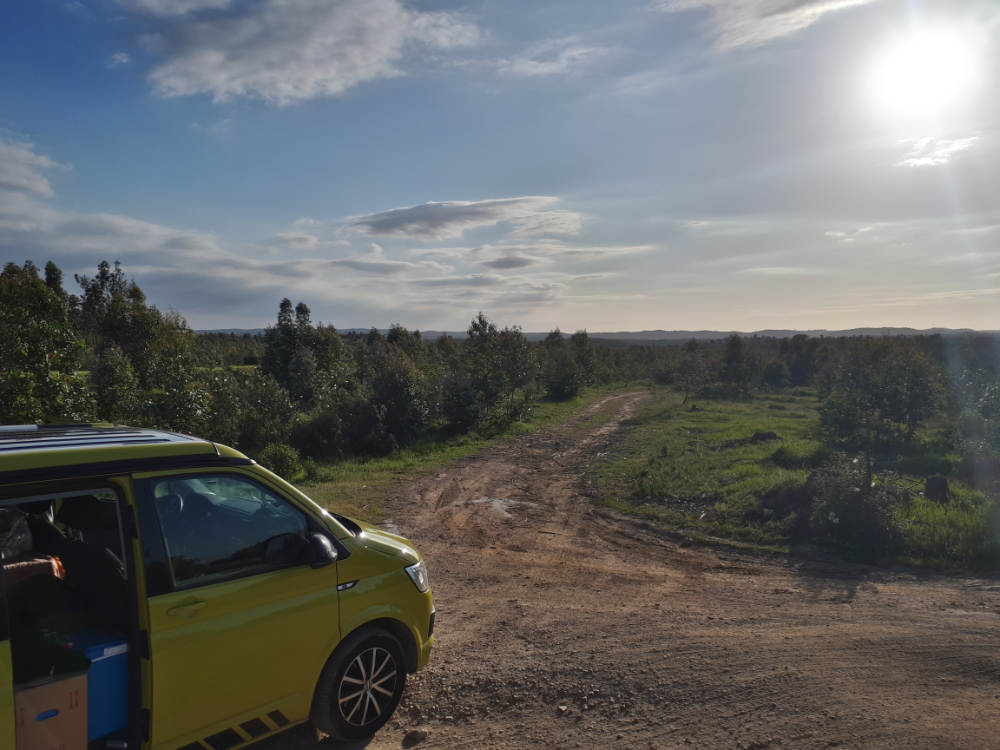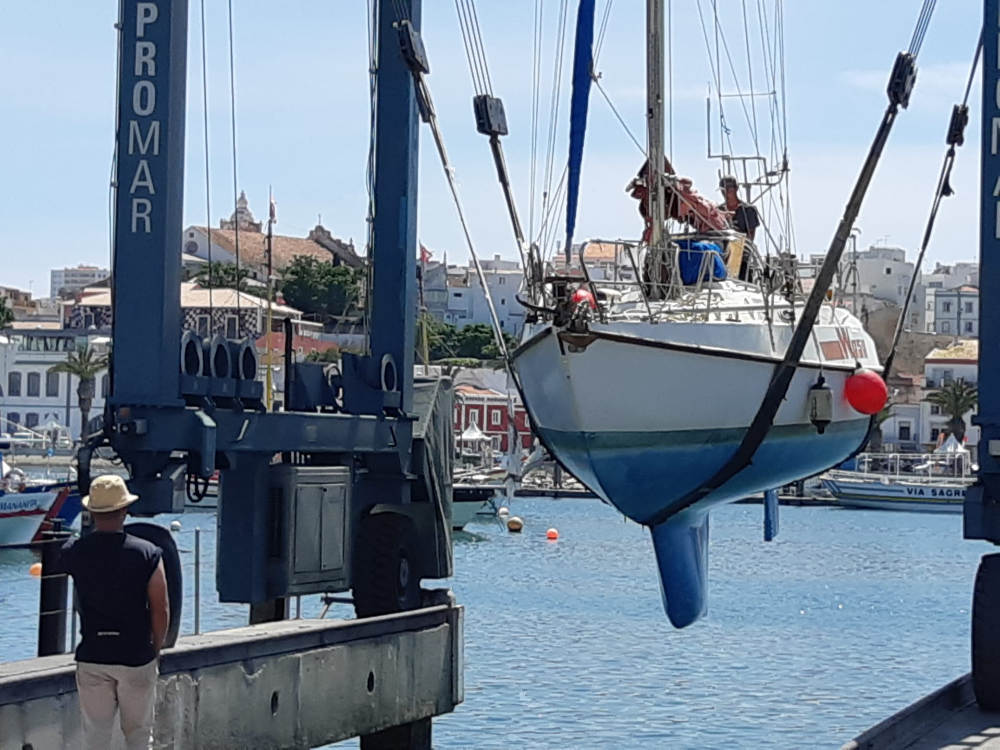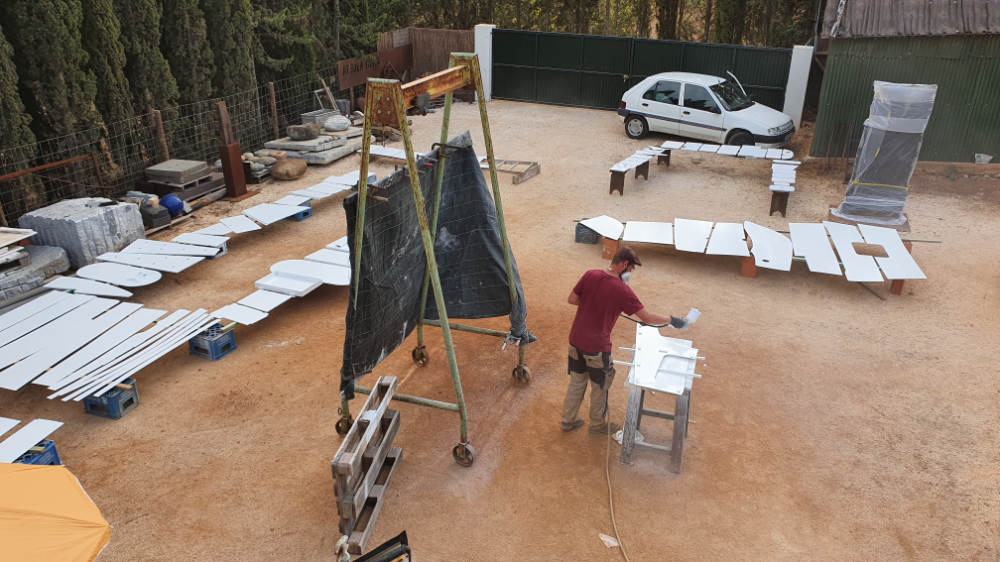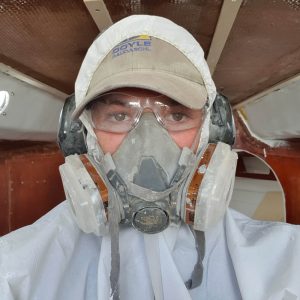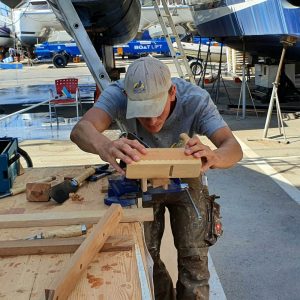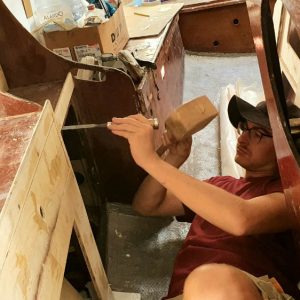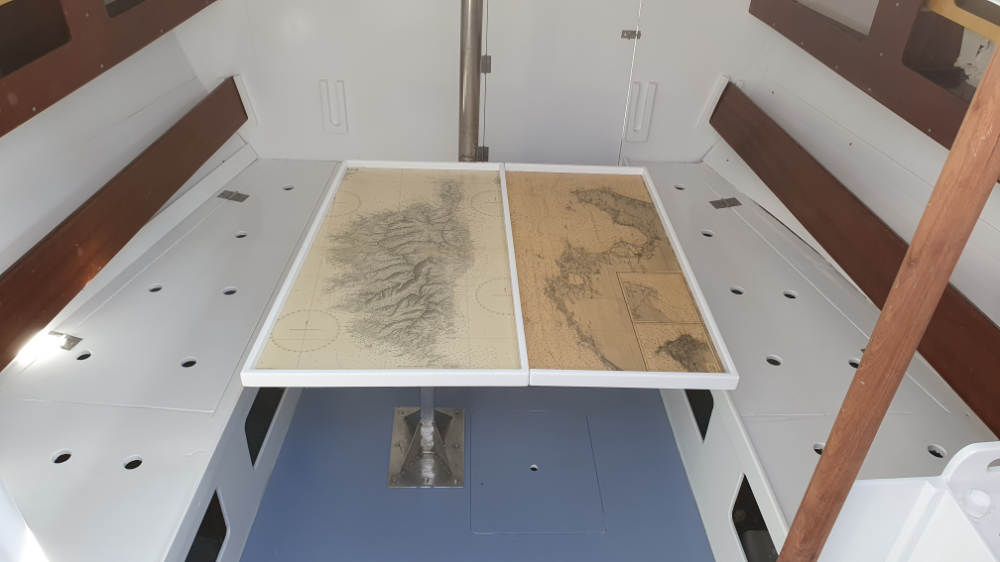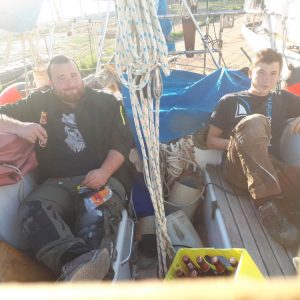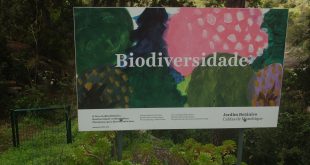Saturday 9th October 2021.
Who actually determines our future? Children pass through different stages in their lives where the future becomes an everyday reality: it becomes their normality. But what becomes of our dreams? Who actually gets to realise their dreams and how do they go about this? We come into this world and are taken to a nursery, then we are put into school, maybe go to university too, and of course we are issued with report cards, pass exams, do our best to ride the learning curves that only adolescents are subjected to. What are they really learning, our children, who, at some point, will become adults themselves? What did we learn when we were children? For Life? And what kind of a life is this? Earning money? What for and why? And then, at some point in the future, it’s the end. All of a sudden, without warning. Some of us are caught earlier, others later. There was still so much we wanted to do, though! But what was it again? Does an investment in life have to be profitable? And what does profit mean? That the laws of the market turn the natural laws on their head? Water does not flow uphill. Fires can be put out. Potatoes grow in the soil. What does the future mean against a backdrop of climate change? Will it be when the air and the water of the oceans simply become too warm? When algae cover the sea? When the next hurricane is even stronger than the last? How do we imagine our future to be? Is it true that 40% of all the young people in the EU between the ages of 16 and 21 who were surveyed no longer want to have children because they are scared of the future? Is this good or bad? In which direction is humanity – young people – drifting? ECO123 is accompanying different people on their journey. As part of its “Ten Steps to Climate Neutrality” series, ECO123 is today telling the story of a young man and his sailing boat. Where is he going?
… To glide silently across the lake far from the stress and noise of everyday life. To spend a few hours in the evening on the water, after school or after work, alone or together with friends. Powered by the force of the wind alone, to move from A to B, to set off from one island to reach the next. The sheer adventure of braving the elements in a storm and discovering foreign lands, glowing with beauty and unspoilt nature…
A Man and his Boat – Four Years Alone Around the World
“My name is Paul Piendl. I am 23 years old and was born on 7 September 1998 in Munich, Germany.” This was what the young man wrote in his CV, which ECO123 is quoting from. Growing up in close proximity to the Alps, a youthful Paul dreamt of sailing, the friendliest and cleanest form of locomotion, moving across the water, powered by the wind. “After the birth of my sisters in 2002,” Paul wrote, “my parents decided to leave the city and move some 40km southwest, to Schondorf, on the shores of the Ammersee” This was where he attended primary school and, later, a few villages further on, the Ammerseegymnasium high school, where he completed his school career with the Abitur. It was during the preparations for his final examination that Paul decided to attend a three and a half-year training course, learning how to build boats, instead of going to university. So, what was his plan?
It was the elements of water and air that fascinated the young boy living on the edge of the Ammer Lake, in the foothills of those big mountains. And then he read the book by Rollo Gebhard, “A Man and his Boat – Four Years Alone Around the World”, which his great-grandfather had passed down to him, sowing the seeds of a dream. At that time, he was in the sixth or seventh year at secondary school, devouring the adventures of a man who, during his 92 years of life, undertook several sailing trips around the world. A plan began to take shape in Paul’s mind, to set sail one day with his own sailing boat and explore the world. This was the perspective he had in his mind, and it reached further then the mountains with their snow-covered winter summits. But how could he make this adventure come true, how could he fund it?
This was a question he asked himself repeatedly over the following years. To start with, he learned the trade of a boatbuilder, a solid foundation for a practical seaman’s education. Already with the boatbuilder’s certificate of apprenticeship in his pocket, he kept on working at the workshop for a few more months, earning some money for his sailing trip around the world. In March 2020, Paul Piendl set sail for Portugal, to restore the boat he’d bought there in preparation for his planned round-the-world trip. Which is really why this story starts in the Algarve. After spending some time searching, it was in Olhão that Paul found a nine-metre-long sailing yacht, 42 years old. Its name was WASA and it used to belong to a couple who gave up sailing for health reasons and put the boat up for sale. And the best thing about it was, as Paul writes, that “the boat had already completed a successful round-the-world trip and several Atlantic crossings, was fully equipped and displayed great potential for its recovery, with a quick lick of paint, and love.” Really?
During a dinner they had together, he related his find to his parents. “I revealed to them that I had already contacted the seller and was thinking about going to see the boat over the next few days.” Conclusion: “This was the first time that my parents had fully understood that my plans were for real.”
That dinner turned into a long night. Father, mother and son spent their time talking about the round-the-world sailing trip, discussing possible routes, potential dangers and the opportunities to turn the plan into reality. Although they were a little scared thinking about possibly losing him to the ocean, they supported him from day one. Equipped with very little spare cash as a young apprentice, he was hoping that his family would lend him the money he needed to buy the boat. With his exact description of his plans and his promise to look after himself and to pay everything back once the journey was over, it all worked out in the end.
Slowly it dawned on Paul what a challenge his plan really was. In Portugal he’d need a place to live and sleep, plus a budget to cover all the costs of his living expenses: rent, moorage charges, tools, building materials, paint, varnish. Money being one of his biggest obstacles, he started using his time before the start of the trip to work as hard as possible. Paul was also planning to work during his round-the-world sailing trip. Increasing his working hours in his second job, he worked on freelance projects after the docks closed at night, and even took a job at the Munich Octoberfest during his holidays.
 “I started talking to more and more people about my plans and all the challenges I’m facing,” he explained to ECO123 in our first ZOOM chat. “Most are enthusiastic about my idea and try to help me in whatever ways they can. At some point, I found my first sponsor at the rowing club where I sometimes train; and not only did he put forward 1,000 euros, but he was also really encouraging, and luckily suggested that I commit my thoughts to paper.”
“I started talking to more and more people about my plans and all the challenges I’m facing,” he explained to ECO123 in our first ZOOM chat. “Most are enthusiastic about my idea and try to help me in whatever ways they can. At some point, I found my first sponsor at the rowing club where I sometimes train; and not only did he put forward 1,000 euros, but he was also really encouraging, and luckily suggested that I commit my thoughts to paper.”
So, Paul Piendl began to compile a first portfolio about the boat and to draw up his plans. He described who he was, what he’d been doing up to that point, what kind of repairs he expected the boat to need, how long the repairs and restoration work would take, how much it would all cost and what the route for his journey around the world would look like. He didn’t have a clue how a portfolio like that should be structured, nor any experience in communicating with companies or potential sponsors. After a week’s work, he had about seven pages of text, plus a few images that he would show to people when presenting his dream to them.
As Paul explained to ECO123, “with more and more people getting wind of my plans, the opportunity arose for solving my problem of where to live. A few years earlier, a friend of my mum’s had moved to Lagos in the Algarve, with her husband. Originally my mum had just asked her to keep an eye on her boy while he was away from home.” After a few chats and a visit, however, the two of them invited Paul to live with them. Which meant that he now had enough money for the refurbishment work, as well as a place to stay. More than that even. His mother’s friends were artists and they both worked as sculptors in Lagos. Not only did they have a workshop, but they also kept making great suggestions whenever he found himself at the end of his tether. Looking back, Paul now says, “at the end of the day, we ended up spending nine months, the entire Covid period, together, including lockdowns and restrictions. The two of them were there for me when I needed someone to chat to. They became like a second set of parents for me …”
Departure…
On Friday 13 March 2020, Paul began his journey from Munich to Lagos, in the company of Sofien, a friend from the boat-building college. They borrowed his father’s Volkswagen van, Paul says, to transport materials, tools and the few belongings he had left, as well as to sleep in while they were on the road. On that day, Italy became the first European country to close its borders; his concern was that the same was about to happen in France and Spain, as there had already been massive Covid outbreaks there.
Fifteen minutes before leaving, Paul was still on the phone to the various embassies of those countries to find out if anyone knew whether it was possible to cross the borders. No one knew for sure! Paul and Sofien decide to head off anyway, planning to cross one border a day at least, but, during their first night in France, Paul was assailed by serious doubts about whether he was doing the right thing. He lay awake all night, thinking about what he was doing there and barely able to sleep a wink. A crisis talk with his parents the following morning encouraged him to keep on driving. Two days later, just one day before the borders closed, the two of them reached Portugal in the evening, and were welcomed by Gabriela and Christian Tobin in Lagos.
After arriving and safely settling in, Sofien and Paul would have preferred to start work on the boat as soon as possible. Instead, however, they spent a lot of time in the garden, setting up their flat and looking for jobs. And then came LOCKDOWN. Work on the boat had come to a standstill, and there was no hope of transferring it from Olhão to Lagos. Only four weeks later did the situation become a little easier. In Paulo Piendl’s words: “Some days we were able to take the car to the boat and sort a few things out. Later on, we’d stay at the docks in Olhão for a few nights, returning to Lagos for the weekend. Progress was slow. We started by clearing away all the stuff that had accumulated during the 42 years that the boat’s previous owners had had it. Instruments, sails, cupboards, spare parts, carpets and the boat’s out-of-date wiring were all sorted, and things were either put into storage or thrown out. Over time, we decluttered more and more, trying to understand the true state the boat was in, but also having to ensure that the boat remained seaworthy for the crossing to Lagos.”
When Sofien left in May 2020, the ports in Portugal were still closed. It was impossible to sail WASA from Olhão to Lagos. “Unfortunately, we didn’t get much done in those two months, but we had a great time together and got to know the local area a bit better,” Paul writes.
Then, in mid-May, the ports were finally opened! “Wasting no time, I took the old lady to the water as fast as I could. With just one stopover in Villamoura, I sailed the boat to Lagos over the course of two days. On 22 May, it was hauled ashore, and the mast lowered, marking the beginning of the real work!”
Surprises
“In every corner, and behind each bit of panelling, I would find new flaws: the drainage system was rotten, the plywood parts too, the laminate was peeling off, and even the metal plates and chains that secure take the mast’s rigging were rusty to the point of breaking if you so much as tried to move them! Often, I had to remove or destroy the entire panelling to get to these kinds of places. There was a time when the boat was completely gutted. ”(…)
Things on deck weren’t much better in fact. The paint had worn away over time, and, in a lot of places, the coat of varnish, some of it several millimetres thick, was peeling. I didn’t want to leave it like that. I was planning to remove the old paint and apply a new coat on the deck; however simply trying to remove the deck fittings presented a new challenge. At least every third screw was already so weak that when you tried to loosen them, they broke off and then got stuck. Everything I touched and examined a little more closely crumbled under my fingers. It was all rotten or rusty. Slowly it dawned on Paul that when he had scheduled three months for the remodelling work, he’d completely underestimated the time it would take.
Until the end of July 2020, he worked on the boat on his own. It was still too difficult to cross the borders. Friends and colleagues who wanted to visit him to come and help were not allowed to travel. His parents were the first to visit the boat and Portugal. His dad needed the van back, but, most of all, they wanted to see their son and find out how he was. As Paul remembers it, “My dad helped me on the site for the entire week they were here …”
… and as he wrote: “I spent my days sanding down the inside of the epoxy resin shell in temperatures of 30 degrees, wrapped in a protective suit and face mask. But, after only a few minutes, my clothes were soaking wet. When I was finally done and had applied the first coat to the inside, I nearly fell to the floor, astounded by what I was seeing. The paint wasn’t hardening! Although the ratios of my mixture looked to be correct, some residue from the old glue had remained stuck in the deep grooves of the laminates, basically putting paid to all that hard work. I had to wash the entire surface several times with acetone and then sand it down again before being in a position to make another attempt (…) It was unbearable. I was so down, so desperate about having worked for days and weeks for nothing that I needed a few days just to be able to think normally. I shed secret tears in the cabin at the stern, and I seriously considered going home several times, leaving everything behind and moving back to my “normal” simple life by the lakeside.”
Luckily, his determination to pull through and the dream of sailing were stronger. Christian and Gabriela also helped to revive him with some hard work and plenty of coffee.
“So, once again, I painted the inner shell, built cupboards, installed new linings in the interior and a new table. Everything had to be adapted to the specific round shapes of the boat. Nothing could be marked with a 90-degree angle or trimmed in a straight line. Every part had to be made to measure …”
He was pleased when, in August, another friend from Ammersee arrived in Portugal. Leon wanted to join them in sailing across the Atlantic; he’d just completed his carpentry apprenticeship and was highly motivated to help them work on the boat. Apart from a month’s break, he stayed on until the end, and they started making great and, above all, highly visible progress. They built a kitchen, installed more linings, modified the storage areas, built window frames and varnished the entire interior of the boat. Everything that could be taken out was removed once more. The boat was empty again. They sanded down all the wooden parts and then varnished them. Anything that was firmly fixed into the boat was covered in a coat of bright white paint using a brush and roller; everything else was painted with the help of a spray gun.
One of the last steps was to get the mast back into shape. For nearly nine months, it had been lying next to the boat, virtually untouched. All the fittings and rivets were corroded, the paint was peeling, and the rigging (the wire ropes stabilising the mast) wouldn’t be able to weather another storm. Again, everything was removed, revealing the aluminium base. This was varnished once again and the repaired plates were fitted back in place, with new rivets. The sails were newly tailored and pressed by the local sailmaker.
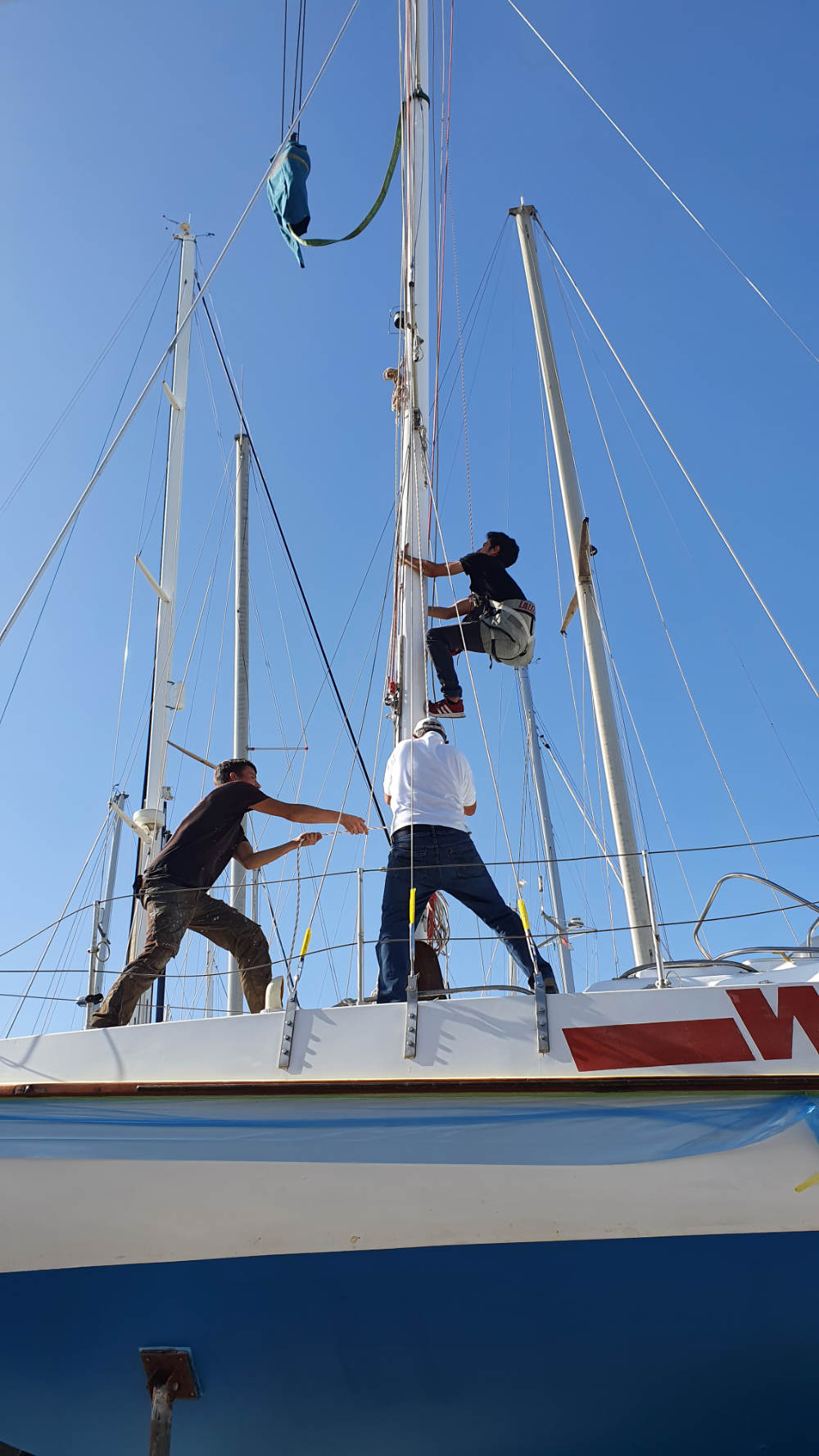 “At last! With the mast upright, it looks like a sailing boat again for the first time! Only two more nights until the date when we’re going to hoist her up!” it says in Paul’s diary, and “What a moment! An incredible relief! Everything tight, everything afloat, nothing breaks.”
“At last! With the mast upright, it looks like a sailing boat again for the first time! Only two more nights until the date when we’re going to hoist her up!” it says in Paul’s diary, and “What a moment! An incredible relief! Everything tight, everything afloat, nothing breaks.”
Moritz, the third member of the Atlantic crew, had arrived in Lagos the day before. The three young men were so euphoric that they wanted to head straight out to sea, down the small channel, to ‘sniff a little ocean air.’ “However, we were brought back to reality as the tools scattered all around the place started sliding across the deck. So, we preferred to head back quickly. This was the first time we had waited in front of the drawbridge across the entrance to Lagos Marina. We’d crossed over this bridge hundreds of times on our way to lunch, always thinking of the day when we ourselves would be the cause of pedestrians having to wait on each side of the river. Now it was finally happening. The bridge opened and we and our WASA were allowed to pass.”
For a whole month, we gave everything. Our goal was to begin the first leg of our voyage, to Lanzarote, still in 2020. We made cushions for the bunks, installed the water system, the bilge pumps, checked and repaired the engine and installed a completely new electrical system…
From time to time, the three of them would go on trial runs along the Lagos coast, changing a few details here and there, before finally moving onto the boat for their first night aboard on 15 December. Two weeks later, everything was ready. They were settled in and had bought the necessary provisions. The car was sold, any left-over rubbish disposed of, and the Tobins’ flat was cleaned. They had managed to keep to their schedule, and the last day of the year, 31 December, saw them set sail straight to Lanzarote!
Welcome to a new year, on the high seas.
“This first crossing was a dress rehearsal for both crew and boat,” as Paul writes in his logbook. “Shortly after we lost sight of land, we got a lot more wind than was forecast. For two days, we had to cope with winds of between 30 and 40 knots battering the prow. The waves were steep and high, about five metres I’d say. We all became seasick and were throwing up. During our attempts to recharge the batteries, the engine room started smouldering: the generator had suffered a short-circuit. We didn’t yet know the boat well enough, which meant that we were often reefing the sails too late. The crossing took us to our mental and physical limits…”
When, after five days, they reached the marina of Lanzarote late at night, they were probably the most tired, but also the happiest people for miles around. They stayed on the island for about a month. Their journey here had shown them that there were a few more things to improve before tackling the Atlantic crossing. They needed a new generator, had to fix a hole in the cockpit, get the foresail fixed and make a few improvements in the rope guides and sail trim.
By now, a few magazines back in Germany had got wind of their trip and were writing about it. Many new people were reading about the preparations and the crossing. They were sharing in their joy and praising their courage and resilience. The team felt the great feedback was giving them a second wind, allowing them to make good progress with their projects. Donations started to come in and served to cover all the costs incurred with the broken generator, the sailmaker and the other repairs!
From Lanzarote we headed for La Palma, where we stocked up with provisions for one last time. We had reached the westernmost point of Europe. The starting point for our Atlantic crossing!
It took them only 18 days and two hours to cover the 2,526 nautical miles from La Palma to French Guyana. They had spent a long time preparing for what was now proving to be a perfect crossing. The Passat wind was blowing steadily and strongly, at 25 knots. Across the entire stretch of ocean, they didn’t encounter a single storm, which meant that throughout the whole voyage they only had to change the position of their sails once, so that they could fix a tear in the foresail.
Paul: “We reached French Guyana at Dégrad des Cannes, just north of the Brazilian border. What a joy it was so early in the morning to see the outline of the rainforest taking shape on the horizon after such a long time of being surrounded by water. “Land Ahoy!”, we cheered each other on, jubilant. Despite the long night shift, all sense of tiredness had disappeared. We were happy, had a bath and washed, preparing for ‘landfall’. Passing a French military base, we dropped anchor later, a few miles inland in the Mahoury River. The crate of beer, which we had stored in the hull in order to celebrate our arrival, since this was the coolest place aboard, was now finished, and the party continued until late into the night.
Next Saturday, I’ll tell you more about our Atlantic crossing…”
 Eco123 Revista da Economia e Ecologia
Eco123 Revista da Economia e Ecologia

